Books
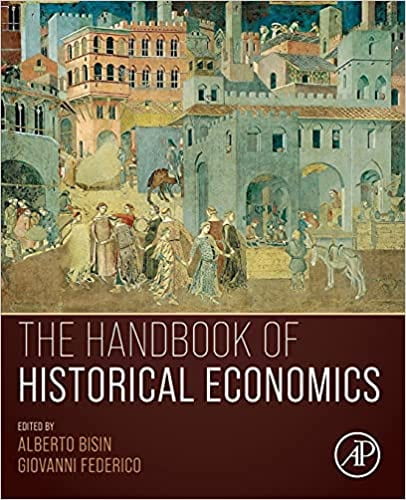
Handbook of Historical Economics
By Alberto Bisin and Giovanni Federico, Eds., Academic Press, 2020.
The Handbook of Historical Economics guides students and researchers through a quantitative economic history that uses fully up-to-date econometric methods. The book’s coverage of statistics applied to the social sciences makes it invaluable to a broad readership. As new sources and applications of data in every economic field are enabling economists to ask and answer new fundamental questions, this book presents an up-to-date reference on the topics at hand.
Listen to: Faculti Video Presentation; New Books Network Podcast
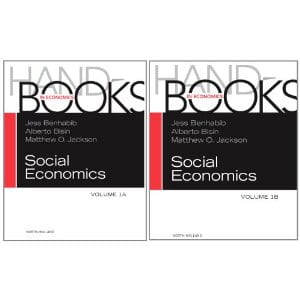
Handbook of Social Economics
By Jess Benhabib, Alberto Bisin, Matt Jackson, eds. (North Holland, 2010)
How do economists understand and measure social phenomena? Identifying economic strains in activities such as learning, group formation, discrimination, and peer dynamics requires sophisticated data and tools as well as a grasp of prior scholarship. In this volume leading economists provide an authoritative summary of social choice economics, from norms and conventions to the exchange of discrete resources. Including both theoretical and empirical perspectives, their work provides the basis for models that can offer new insights in applied economic analyses.
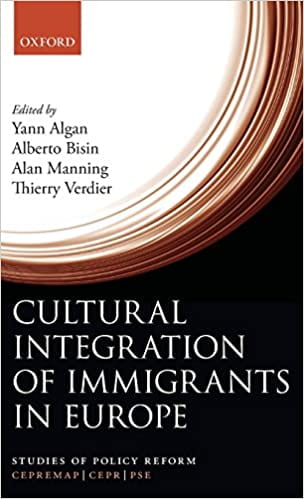
Cultural Integration of Immigrants in Europe
By Yann Algan, Alberto Bisin, Alan Manning, Thierry Verdier, eds. Oxford University Press, 2012)
The concepts of cultural diversity and cultural identity are at the forefrontof the political debate in many western societies. In Europe, the discussion is stimulated by the political pressures associated with immigration flows, which are increasing in many European countries. The imperatives that current immigration trends impose on European democracies bring to light a number of issues that need to be addressed. What are the patterns and dynamics of cultural integration? How do they differ across immigrants of different ethnic groups and religious faiths? How do they differ across host societies? What are the implications and consequences for market outcomes and public policy? Which kind of institutional contexts are more or less likely to accommodate the cultural integration of immigrants? All these questions are crucial for policy makers and await answers. This book aims to provide a stepping stone to the debate. Taking an economic perspective, this edited collection presents a current, comparative picture of the process of cultural integration of immigrants across Europe. It documents the main economic debates on the causes and consequences of cultural integration of immigrants, and provides detailed descriptions of the cultural and economic integration process in seven main European countries, including France, Germany, Italy, Spain, Sweden, Switzerland, and the United Kingdom. It also compares the European context with the integration of immigrants in the United States.
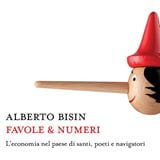
Favole & numeri: L’economia nel paese di santi, poeti e navigatori
By Alberto Bisin (Egea-Bocconi, 2013)
La cattiva economia è come la cattiva medicina: può fare molto male, anzi peggio. In Italia, paese per certi versi unico, un’impostazione troppo umanistica sembra rendere la logica economica impossibile da comprendere e i dati inavvicinabili, lasciando troppo spazio a libere interpretazioni di concetti, politiche, istituzioni, meccanismi di mercato e di intervento statale. Fino, addirittura, a raccontare favole. E a darli i numeri, anziché interpretarli. L’intento del libro è discutere gli aspetti più caldi della situazione italiana proprio facendoci esercitare, in modo brioso, non paludato, a un metodo di analisi. Non ci sono lezioni, nel libro, ma forza espositiva, vis polemica e qualche indicazione che può essere utile a molti.
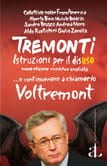
Tremonti: Istruzioni per il disuso
By Collettivo NoiseFromAmerika: Alberto Bisin, Michele Boldrin, Sandro Brusco, Andrea Moro, Giulio Zanella (2010)
Tremonti ha francamente scocciato. Non tanto per quello che fa in qualità di ministro dell’Economia, visto che fa veramente poco, ma soprattutto per quello che dice. Per non lesinare sulla nostra irriverenza, ci immagineremo Tremonti come Voltremont. Chi È Voltremont? Beh, Voltremont è nella nostra immaginazione il cugino politico di Lord Voldemort, il Signore del Male della saga dei libri per ragazzi del maghetto Harry Potter. L’intenzione del libro è banale come le teorie economiche di Voltremont: rendere esplicito che l’Oscuro Signore è intellettualmente in mutande e che le medesime sono anche piene di buchi.
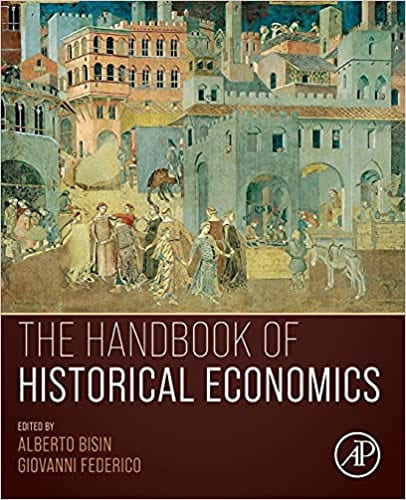
Handbook of Historical Economics
By Alberto Bisin, Giovanni Federico, eds. (forthcoming, North Holland, 2020)
The Handbook of Historical Economics guides students and researchers through a quantitative economic history that uses fully up-to-date econometric methods. The book’s coverage of statistics applied to the social sciences makes it invaluable to a broad readership. As new sources and applications of data in every economic field are enabling economists to ask and answer new fundamental questions, this book presents an up-to-date reference on the topics at hand.
Listen to: Faculti Video Presentation; New Books Network Podcast

Handbook of Social Economics
By Jess Benhabib, Alberto Bisin, Matt Jackson, eds. (North Holland, 2010)
How do economists understand and measure social phenomena? Identifying economic strains in activities such as learning, group formation, discrimination, and peer dynamics requires sophisticated data and tools as well as a grasp of prior scholarship. In this volume leading economists provide an authoritative summary of social choice economics, from norms and conventions to the exchange of discrete resources. Including both theoretical and empirical perspectives, their work provides the basis for models that can offer new insights in applied economic analyses.

Cultural Integration of Immigrants in Europe
By Yann Algan, Alberto Bisin, Alan Manning, Thierry Verdier, eds. (Oxford University Press, 2012)
The concepts of cultural diversity and cultural identity are at the forefront of the political debate in many western societies. In Europe, the discussion is stimulated by the political pressures associated with immigration flows, which are increasing in many European countries. The imperatives that current immigration trends impose on European democracies bring to light a number of issues that need to be addressed. What are the patterns and dynamics of cultural integration? How do they differ across immigrants of different ethnic groups and religious faiths? How do they differ across host societies? What are the implications and consequences for market outcomes and public policy? Which kind of institutional contexts are more or less likely to accommodate the cultural integration of immigrants? All these questions are crucial for policy makers and await answers. This book aims to provide a stepping stone to the debate. Taking an economic perspective, this edited collection presents a current, comparative picture of the process of cultural integration of immigrants across Europe. It documents the main economic debates on the causes and consequences of cultural integration of immigrants, and provides detailed descriptions of the cultural and economic integration process in seven main European countries, including France, Germany, Italy, Spain, Sweden, Switzerland, and the United Kingdom. It also compares the European context with the integration of immigrants in the United States.

Favole & numeri: L’economia nel paese di santi, poeti e navigatori (Italian Edition)
By Alberto Bisin (Egea-Bocconi, 2013)
La cattiva economia è come la cattiva medicina: può fare molto male, anzi peggio. In Italia, paese per certi versi unico, un’impostazione troppo umanistica sembra rendere la logica economica impossibile da comprendere e i dati inavvicinabili, lasciando troppo spazio a libere interpretazioni di concetti, politiche, istituzioni, meccanismi di mercato e di intervento statale. Fino, addirittura, a raccontare favole. E a darli i numeri, anziché interpretarli. L’intento del libro è discutere gli aspetti più caldi della situazione italiana proprio facendoci esercitare, in modo brioso, non paludato, a un metodo di analisi. Non ci sono lezioni, nel libro, ma forza espositiva, vis polemica e qualche indicazione che può essere utile a molti.

Tremonti: Istruzioni per il disuso
By Collettivo NoiseFromAmerika: Alberto Bisin, Michele Boldrin, Sandro Brusco, Andrea Moro, Aldo Rustichini, Giulio Zanella (Ancora del Mediterraneo, nuova edizione 2011)
Tremonti ha francamente scocciato. Non tanto per quello che fa in qualità di ministro dell’Economia, visto che fa veramente poco, ma soprattutto per quello che dice. Per non lesinare sulla nostra irriverenza, ci immagineremo Tremonti come Voltremont. Chi È Voltremont? Beh, Voltremont è nella nostra immaginazione il cugino politico di Lord Voldemort, il Signore del Male della saga dei libri per ragazzi del maghetto Harry Potter. L’intenzione del libro è banale come le teorie economiche di Voltremont: rendere esplicito che l’Oscuro Signore è intellettualmente in mutande e che le medesime sono anche piene di buchi.